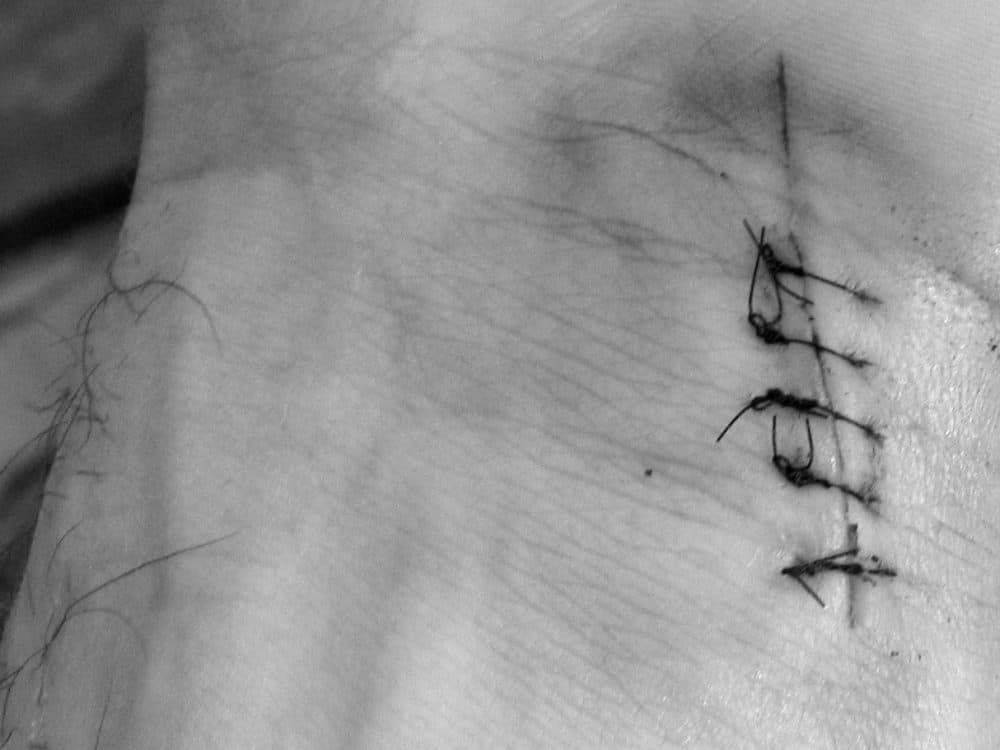Advertisement
When Your Sutures Talk Back To Convey Critical Medical Info

It’s a week after your surgery and you wake up to a message from your doctor telling you to pick up a prescription for antibiotics because your incision site is infected. How did they know if they haven’t seen you since the surgery? Because your sutures told them so.
Suturing, and the threads that are used for them, have been around for thousands of years but now they are in for a big upgrade.
Researchers at Tufts University have developed a “toolkit” of biocompatible threads that can sense everything from temperature to pH to physical strain. So far, the work is just in mice.
"Most sensors that people build are typically on hard substrates like glass or silicone. We were very interested in making sensors that we can intimately interface with tissues and biological things,” said Dr. Sameer Sonkusale, the lead researcher and an associate professor of electrical engineering at Tufts University.
The researchers started with cotton thread, like the ones that make up your shirt, and worked from there to develop an entire toolkit of sensors. The team has moved on from cotton thread to polyurethane, a plastic like substance, and rubber, but the fundamentals of why they chose thread haven’t changed. Thread is biocompatible, thin, flexible and widely available.
The researchers created all of these different threads for their toolbox and tested them on the mice. The threads were as accurate as over-the-counter sensors and were biocompatible with the mice — cells grew on, and around, the thread with little inflammation or adverse reactions.
To test pH and glucose, the researchers used the natural absorbing abilities of the thread to carry fluid from inside the body to the sensors. The threads require no pump or syringe and can transport fluids out of the body through capillary action, the same mechanism trees use to carry water to their leaves. To measure physical strain, the researchers coated the thread in a conductive nanoparticle and measured the resistance, the ease at which electricity ran along the thread, to measure the tension.
The threads are attached to a small, half-credit card sized transmitter that sends the data collected by the thread to an iPhone app via Bluetooth.
Suturing with these threads is just one possible use for them. They could be attached to implants to monitor healing and scar tissue or sewn into clothes and bandages.
“There is no inherent restrictions on where these threads can go,” said Sonkusale. “The hope is that when you suture someone with these threads, the surgeon could monitor some of these biomolecules inside and would know whether there is infections, whether there is swelling, whether there is inflammation — without opening up the wound.”
While implanted threads still have years before seeing human trials and clinical use — they have to pass human trials and FDA regulations — non-implanted threads, sewn into medical materials like bandages, could see pilot studies within a year or two, researchers said. Sonkusale hopes to use the threads to monitor wound healing and infection by connecting them to a membrane that would cover the wound.
The researchers are also testing whether the threads can be used to deliver drugs to tissue but have yet to analyze their results.